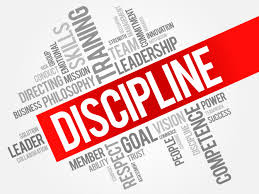 Documenting employee discipline does not have to be a negative experience for you, your employee, or your company. Discipline can be a positive force that helps guide and drive an individual to their full potential. But for this system to work, managers and employees will have to work together to overcome obstacles and achieve goals. Steps will need to be documented appropriately, and both managers and employees will need to be consistent within their approach. Employee discipline can range in many forms. A mild action being coaching or retraining an employee to more severe consequences such as verbal or written warnings. Keep in mind that you begin with fair expectations; you then document your process and remain consistent with communication between yourself and your employee.
WHAT TO DO: ●Clear expectations. Have clear policies and procedures that layout acceptable behaviors and expectations. Creating attainable goals with your employee will strengthen your communication and allow for your expectations to be known. ● Be consistent with discipline. It is crucial to address any infractions consistently and in a timely manner. Remember to remain consistent with everyone so that everyone is treated the same way. If you lack consistency in this area, you could be found guilty of unequal and biased treatment. ● Establish a disciplinary process. Once an infraction has occurred, it is important to take action right away to avoid the possibility of being biased or giving the impression that the violation that the employee committed was not a problem. When it comes to establishing a disciplinary process, you can use a couple of methods when handling disciplinary issues: ● Progressive discipline. When using this process with employees, you increase the severity of your response when the issue does not become corrected. The primary purpose of progressive discipline is to assist the employee in understanding that a performance problem or improvement opportunity exists. You must document every step that you take to correct an employee. Taking detailed notes will protect you and give the employee a clear direction as to what you expect. ●Performance Improvement Plan (PIP). This method is to be used when an employee is not meeting the desired performance or actions that are expected. It is a formal document stating any recurring issues and goals that an employee needs to achieve to regain good standings. PIP’s are usually laid out with a specific timeline to complete the plan. Key Points:
1 Comment
|
UpSourced HRRecent thoughts on the HR profession and articles that might interest our clients. Archives
April 2024
Categories |
Telephone |
|

 RSS Feed
RSS Feed
